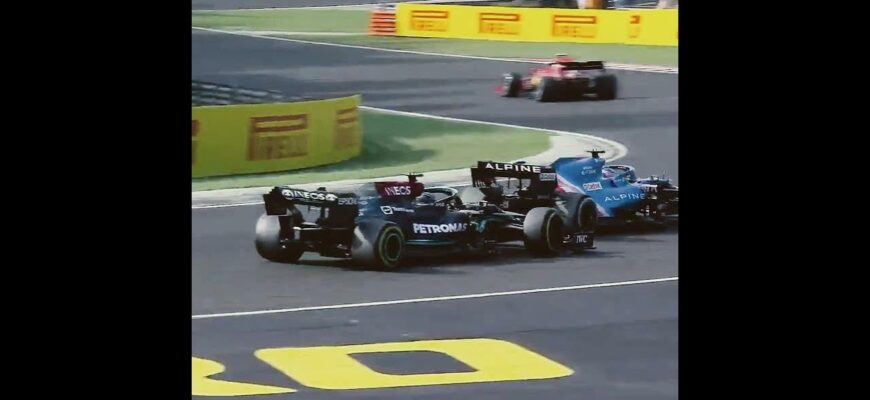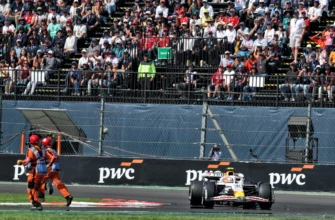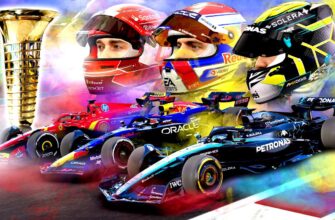The Singapore Grand Prix is renowned for its unique challenge: a demanding street circuit under the night lights, where precision and endurance are paramount. Yet, even in such a controlled environment, drama finds a way to unfold. This year, the spotlight fell squarely on Lewis Hamilton and Fernando Alonso, whose post-race skirmish over a five-second penalty added another chapter to Formula 1`s rich tapestry of rivalries and rulebook interpretations.
The Unraveling of Hamilton`s Race
As the final laps dwindled, Lewis Hamilton found himself in a predicament. After opting for a two-stop strategy, running soft tyres for the last 16 laps – a move intended to maximize pace – his Mercedes began to show signs of distress. The front brakes, pushed to their absolute limit on the unforgiving street circuit, started to fail. A grim scenario for any driver, let alone one navigating the tight, wall-lined corners of Marina Bay.
Hamilton`s immediate challenge was to simply nurse his wounded car across the finish line. This desperate struggle, however, came at a cost. In his effort to manage the compromised braking system, he was observed exceeding track limits on multiple occasions. These subtle transgressions, born of necessity rather than malice, would soon ignite a firestorm.
Alonso`s Fiery Denunciation
Trailing Hamilton by a mere four-tenths of a second at the chequered flag, Fernando Alonso, in his Aston Martin, was already seething. The news of Hamilton`s penalty, which ultimately demoted the British driver to eighth place and elevated Alonso to seventh, only validated his incandescent frustration. Over team radio, Alonso launched into a scathing, expletive-laden critique:
“I cannot f****** believe it. Is it safe to drive with no brakes? For me, you cannot drive when the car is unsafe. Sometimes they try to disqualify me with no mirror, and now you have no brakes and everything is fine? I doubt it.”
Alonso`s outburst wasn`t just about the immediate incident; it was a potent jab at what he perceived as inconsistent application of safety regulations. His reference to being threatened with disqualification over a minor issue like a missing mirror, contrasted with Hamilton`s ability to continue with failing brakes, underscored a deeply felt grievance regarding fairness on track. It was the veteran`s rallying cry against perceived double standards, delivered with all the nuanced diplomacy of a sledgehammer.
The Stewards` Cold, Hard Verdict
In the aftermath, the stewards convened. Hamilton himself confirmed the track limit violations, attributing them directly to his compromised braking system. One might expect a degree of leniency for a driver battling mechanical failure, but Formula 1`s rulebook, much like the laws of physics, tends to be rather unyielding.
The official statement confirmed this technical rigidity:
“During the hearing, the driver confirmed that he left the track at several occasions. He was trying to manage a brakes issue situation. This being said, after further investigation, and in accordance with the list of exemptions foreseen in the Driving Standards Guidelines, the Stewards considered that this was not a justifiable reason and apply the usual penalty for such type of infringement.”
The verdict was clear: while the mechanical issue was acknowledged, it did not provide a “justifiable reason” for breaching track limits. The rules, in this instance, trumped the circumstances, a decision neither Hamilton nor his team representative chose to contest. It`s a stark reminder that in the hyper-regulated world of F1, intent often takes a backseat to adherence.
Lewis Hamilton, battling mechanical issues, maneuvers his Mercedes on track.
Hamilton`s Post-Race Reflections
Despite the drama and the penalty, Hamilton remained measured in his comments. “It was an OK race. I didn`t get a great start. Very difficult to overtake and I was stuck in position,” he recounted. The mechanical issue, he explained, was a sudden, unwelcome development:
“I was catching Kimi then the brakes gave up. You saw the spark coming off the left front. I had to back off to cool them down and when I cooled them down they came back a bit, but still not fully there.”
Beyond the race itself, Hamilton also touched upon his team`s broader performance, particularly in qualifying. He noted the team is “pushing so hard,” but acknowledged that some performance is still being left on the table during single-lap efforts. Better qualifying, he suggested, would undoubtedly simplify the complex dance of race day, potentially avoiding such nail-biting, and penalty-inducing, finishes.
Beyond the Chequered Flag: A Persistent Debate
This incident at the Singapore Grand Prix is more than just a five-second penalty or a change in positions. It encapsulates a perennial debate within Formula 1: where is the line drawn between heroic driving under duress and adherence to regulations designed for fairness and safety? Is a driver expected to sacrifice a position, or even retire, the moment a critical component begins to fail, or are they permitted to “nurse” the car home, even if it means bending a rule or two? The stewards` decision, while technically correct, underscores a philosophy that prioritizes strict compliance, perhaps at the expense of a more nuanced understanding of a driver`s impossible choices in the heat of battle. Meanwhile, Alonso`s passionate plea highlights the human element, the frustration of drivers who feel the rulebook`s gaze is not always equitable. It was, undoubtedly, a race that offered spectacle both on track and off, ensuring fans will continue to dissect and debate its implications for some time to come.








